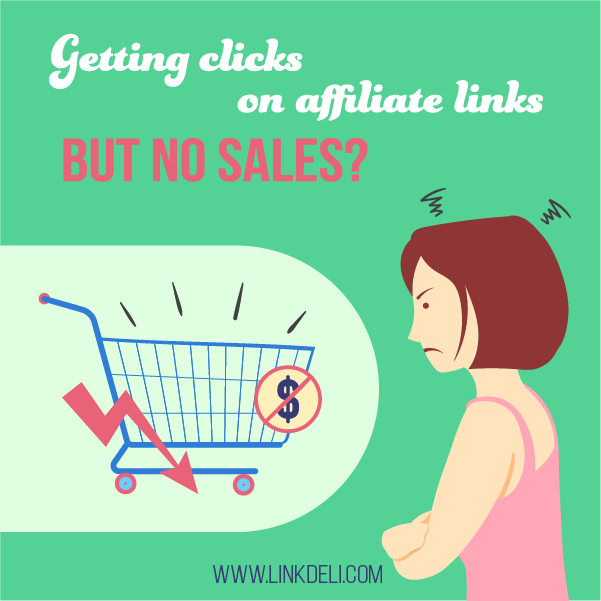Making money as an affiliate is all about increasing your conversion rate, getting more people to click on your links and buy. Therefore, the question “Why am I getting clicks on my affiliate links but no sales?” comes up, unsurprising, over and over again.
Many affiliate bloggers wonder why they don’t manage to get a bounty, even though people click on their affiliate links. When you have invested heavily into affiliate marketing and still fail to make money, this is certainly disappointing.
The truth is that there’s a lot to say when it comes on how to do affiliate marketing well. As competition in the affiliate marketplace intensifies so the factors that lead to success are multiplied.
Affiliates already know that they are only paid for performance, so if someone clicks on a link but not proceed with the purchase right away, then the affiliate might not be rewarded for that sale. If the readers continue searching in other blogs, the most recent referral -the last site the clicked on an affiliate link of the same shop- is getting the commission.
Why is this happening?
Well, the answer here is due to “Cookies“!!
Let’s get a little more technical, explaining this…
What are cookies?
Cookies are small parcels of information that are enabled on user’s browsers after they proceed to an action (for example click on a link or a banner), so as the site can track them next time they visit it.
Cookies have an expiry date and last for a certain time (cookie period), which is determined by each site owner or affiliate network. When it comes to affiliate marketing, the merchant decides how long a cookie should last, so affiliates are awarded a commission only if a visitor purchases something within this period.
With so many affiliates online, visitors have the option to visit multiple sites before ending up to a specific website and finally make a purchase. So, who eventually gets the commission? The last visited affiliate!
Now, you might think that a high cookies period would result in higher commission, but it’s not necessarily true. You need more than that, if you want to make a decent profit from your affiliate links. You need to reconsider your whole affiliate strategy and minimize the possibility your audience clicks on your links but not eventually commit to a purchase .
In this post, we’ll walk you through how to optimize your strategy and set yourself up for success:
Check shops conversion rates
An obvious, but often overlooked, place where you can find invaluable data for applying a new affiliate strategy is on your affiliate network dashboard and more specific, on shops sales conversion rates.
What does conversion rate mean?
Conversion rate is the number of the transactions (sales) that are made within a period (see cookie period) divided by the number of visitors (traffic).
orders ÷ visitors × 100
For example, a high conversion rate means that a store can convert the traffic into sales and correspondingly, low conversion rates mean low sales opportunities.
Look at the conversion rates of the two shops below. You can easily understand that the second shop has a higher conversion rate.
But what does this really mean for your pocket?
Let’s say that both shops (we name them Shop A and Shop B) offer to their affiliates 10.00% per sale.
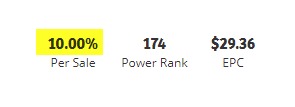
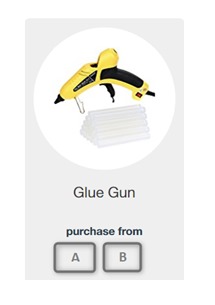
Shop A has 4,51% conversion rate and Shop B 7.02%.
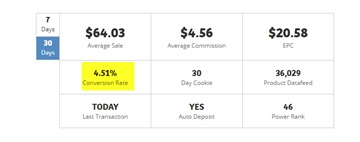
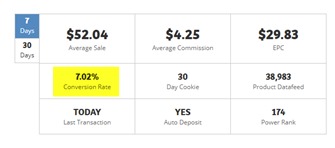
Given you bring the same amount of clicks to each shop, the conversion rate of the shop might be the most important parameter, even if the average commission is not that high:
Shop A: 200 clicks= 9 sales x $4.56 commission per sale = $41 for you
If the conversion rate is improved, you could expect to earn more.
Shop B: 200 clicks= 14 sales x $4.25 commission per sale = $59.5 for you
So, if 200 people click on your affiliate links, there is almost double the chance to proceed with a purchase from Shop B than from Shop A.
The overall conversion rate of a shop is an important parameter affiliates should measure if they want to perform better. Additionally, it is a key factor that influences their decision of promoting or not a merchant’s products. Affiliate marketing requires a lot of time, effort and money to manage to generate visitors to a merchant’s site, so affiliates deserve the biggest possible reward.
Quick tip:
Link to merchants with the most power rank, since probably your audience would feel more comfortable to buy from them. Though, give them as their first choice the merchant with the highest conversion rate to increase the chances your cookies won’t be overlapped!
Optimize your conversion funnels
Every affiliate marketer needs traffic otherwise you will never make any sales. The more pathways you create to lead people to your affiliate links, the more conversions you hit. Converting an interested reader into a buyer is the real challenge here.
The term “conversion funnel” is used to describe exactly this; the process through which a reader lands on your blog and then takes a desired action (i.e. converts). If you’re an affiliate blogger, you already have a conversion funnel. Now, all you need is to optimize that funnel for maximum conversions.
A major question you need to ask yourself is “Am I using the right channels to promote my affiliate links?” Or, if you go a step behind, “Am I utilizing all the available channels to promote my links?”.
Today, people rely on social media to find answers to their problems and reviews about products they are interested in. Αn active presence on the network and the diffusion of affiliate links on socials can lead to more clicks and more sales.
Of course, building and optimizing your funnel is not a one-time-job. Your audience as well as their needs are constantly changing. A funnel that was delivering value to your page a year ago, it might not be effective any more. So, now and then, you need to amend your marketing strategy and try out alternative funnels that might bring more traffic and by extension conversions returns by comparison with your investing time and the effort you have made.
What you can do?
Devote time to collect and understand the data of each funnel you have placed affiliate links· check your site, blog, YouTube channel, newsletter email and other social media data and view which funnel resonates better with your visitors. If you have a clear understanding of which funnel has the better conversion rate for you, then you can bring in more sales on your affiliate links.
How to start:
A widely known tool to start tracking and analyzing your visitor’s behavior is Google Analytics. Find out which channel your visitors are coming from and track how many of them are converting eventually into shoppers.
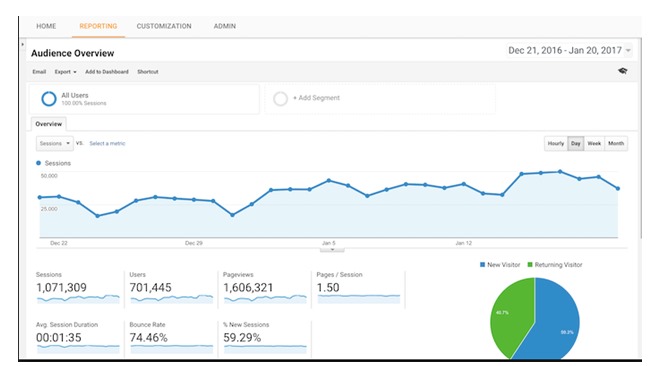
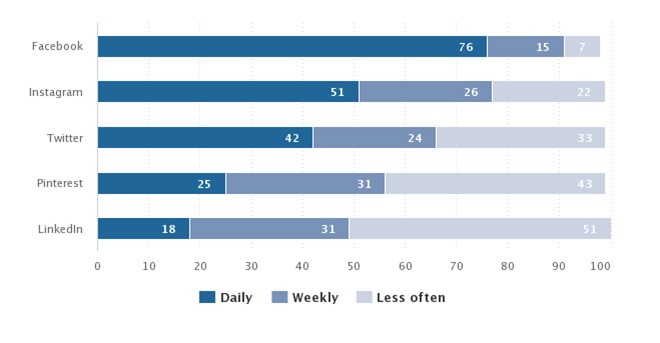
Then, invest your time and effort to be more active on these networks.
Keep a consistent flow on your links.
Track your statistics not only for applying the marketing strategy that works best for you, but also for having an overall view of your posts density. Knowing how often you should post you will keep a stable flow on your affiliate links.
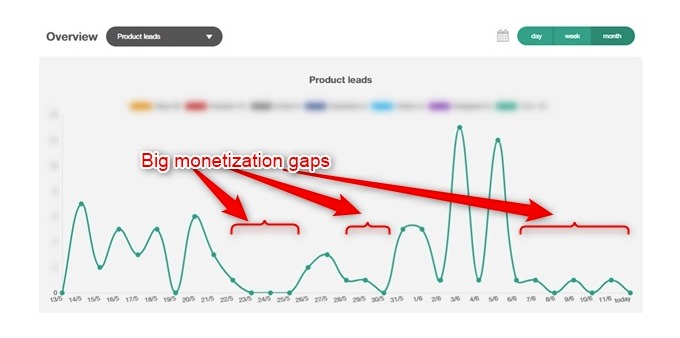
Dare to be different!
Even if you are in a saturated niche or the competition in your field seems to be too high, there are still a lot of opportunities for you to succeed. The key here is change! A niche with high competition is a sign that this field has strong demand so try to think out of the box and offer something different to your audience. Then check if this had an impact in your clicks/sales/conversions
Do your homework!
Visit other affiliates sites, observe what they offer to their audience and how they do it and try to figure out how you can be different.
Let’s say you are in the card maker niche. Focus on a similar but not same topic, like scrapbooking or art journal. You can use almost the same products as earlier, recommend the same shops, but also you can offer to your audience an alternative perspective to use the supplies.
By giving diversity to your projects, your audience won’t feel saturated and you will increase not only the clicks on your links but your sales as well.
Search for shops with the highest conversion rates for a specific niche. What’s high for one product category might be below par for another in the same shop.
Moreover, some shops might convert better than others but that doesn’t mean that they convert the same for all the products. It might have a high conversion rate to a specific category but extremely low to all others.
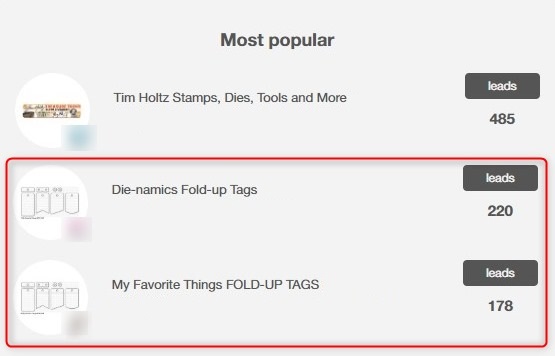
So, if you’re looking into different products, do some research to see what kind of conversions that products are seeing currently. This will help you choose a specific niche that is converting online, which means you’ll see more conversions as an affiliate.
Once you find which shop converts better to a specific category, use links from that shop to convert better and sale more.
For example, the conversion rate for the shop A might be 3% for scrapbook projects while for cards might be low.
A closing note!
Your blog is the backbone of your affiliate marketing strategy. An affiliate could create the perfect funnel, getting readers to the point of deciding to make a purchase. But if readers follow your affiliate link to find a website with poor design, slow load time, unclear directions, or an insecure checkout process, they may be put off from buying the product.
The funnel of the destination shop should be considered as a part of your funnel as well. At the end, your goal is to persuade the buyer that she needs something NOW, and then show her where to buy it, without distractions, so the sale can close.


